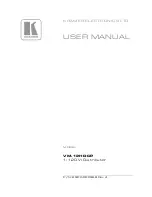
™
10
OPERATION
WARNING
TO AVOID SERIOUS INJURY,
Read and Understand the Entire
Operator’s Manual Before Operating
This Machine.
PRE-OPERATION CHECK LIST
Safety First
Wear the appropriate safety gear.
Hearing protection, gloves and
safety shoes are recommended when
operating the TurnAer-26.
Check -
The oil level in the engine crankcase
with the engine horizontal. If necessary, fill the
engine crankcase in accordance with the engine
manufacturer’s instructions. Engine may have
been shipped from the factory without oil.
Check -
The oil level in the engine gear reducer
with the engine horizontal. Fill in accordance with
the engine manufacturer’s instructions. Engine
gear reducer may have been shipped from the
factory without oil.
Grease -
The fittings in the transport wheel hubs.
Check Fuel -
Use fresh fuel of a type and grade
recommended by the engine manufacturer. Fill the
tank 3/4 full.
Inspect -
The tines and the V-belt for damage.
Check -
For a buildup of dirt, cores, and grass
around the tine reels and under the top guard.
Check -
All guards are in place.
Check -
Retighten any loose nuts and screws to
ensure safe operation.
Check -
The operator controls. Controls must be
fully operational.
Check -
The work site for above and below ground
obstructions and/or dangerous areas.
WORK SITE PREPARATION
Inspect the worksite for safety and any operational
related deficiencies. Deficiencies are anything that
may cause damage to the machine, cause injury to the
operator, or cause injury to bystanders. Prepare the
worksite by correcting any deficiencies found during
the inspection.
The TurnAer-26 tines operate under the ground at
a depth of 70 mm (2-3/4” inches). Under certain
conditions, the TurnAer-26 tines can reach a depth
of 113 mm (4-1/2” inches). Damage will occur to any
buried object that the tines may come in contact with.
Plan your path and know the location of any below
ground as well as above ground objects that could be
damaged by the aerating process.
Locate and mark
all shallow buried electric service,
cable TV, telephone, outdoor lighting, and any other
buried cable that may be damaged by the aerating
process.
Locate and mark
all irrigation heads, above and below
ground irrigation control boxes, and any shallow
buried irrigation lines that may be damaged by the
aerating process.
Locate and mark
any shallow buried natural gas,
propane gas, or other gas or fuel line that may be
damaged by the aerating process.
Locate and mark
any shallow buried roof drain pipes,
drain tiling, drain catch basins, or any other buried
drainage items that may be damaged in the aerating
process.
Locate and mark
any shallow buried sewer pipes,
drain field tiling pipes, sewer collector boxes, sewer
access covers, sewer vent pipes, or any other
buried sewer items that may be damaged in the
aerating process.
MOVING THE TURNAER-26 TO THE WORKSITE
When moving the aerator in a vehicle or on a trailer, the
machine must be securely tied down. Relying solely
on the aerator drive train to prevent movement may
cause damage to the tines, front drums, and wheels lift
latching mechanism. Use wheel chocks and chains to
secure the aerator to the vehicle or trailer. Ties down
holes are provided to use in securing the unit. Place
a piece of plywood under the tines while it is being
moved to provide extra protection for the aerator tines
and the vehicle or trailer.
WARNING
CAUTION
When Being Moved By Vehicle Or Trailer,
Securely Tie Down The Aerator To Avoid Damage
To The Tines, Front Drums and Wheel Lift
Latching Mechanism.
Do not tip the TurnAer-26 on its back or nose during
transportation, operation, service or cleaning. If tipped,
engine oil from the crankcase will enter the piston
cylinder and foul the spark plug.
The front drums are for moving the unit while on the
ground only. When loading the TurnAer-26, do not try
Operation
SAFE-06



































